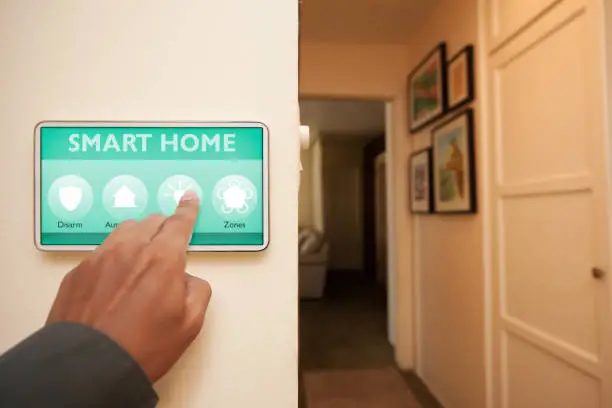
Transforming your house into a sustainable and intelligent sanctuary is no longer a futuristic dream—it’s a practical, eco-conscious choice more homeowners are embracing every day. With growing concerns about climate change, energy consumption, and household waste, modern smart home technologies offer a powerful way to live greener without sacrificing comfort or convenience. These systems help you monitor energy usage, reduce water waste, and even lower your carbon footprint with intuitive automation. Whether you’re planning a full upgrade or just starting out, understanding how smart home installations align with environmentally friendly living is essential for making informed, impactful decisions. From intelligent thermostats to solar-integrated systems, each element plays a part in creating a greener tomorrow while also cutting down on long-term costs and improving your quality of life.
Understanding the Green Potential of Smart Home Technology
Eco-friendly smart home systems are more than just luxury conveniences—they’re engines of environmental impact. These technologies use data-driven control and automation to optimize energy, water, and other resource use in real time. Instead of leaving lights on or heating an empty room, smart sensors ensure that power and resources are used only when and where they’re needed. This shift from manual to automated systems significantly reduces your ecological footprint. Whether it’s motion-detected lighting, energy-saving thermostats, or leak-detecting water monitors, every component adds to a home’s efficiency. The green potential of smart homes lies in their seamless integration with daily life, allowing users to reduce waste effortlessly while enjoying a higher standard of living.
Smart Lighting Systems That Reduce Electricity Waste
Lighting is one of the simplest yet most effective ways to begin your eco-friendly smart home journey. Traditional lighting systems are inefficient, often left on unnecessarily and prone to wasting electricity. In contrast, smart lighting solutions use motion sensors, timers, and daylight-harvesting technology to ensure lights operate only when needed. LEDs controlled through smart hubs or apps allow you to adjust brightness levels and color temperatures depending on the time of day or your specific needs, reducing strain on the eyes and the grid. Some systems also allow lights to automatically adjust based on natural light availability, further enhancing energy conservation. This conscious use of power helps homeowners lower their utility bills while contributing to a more sustainable lifestyle.
Climate Control with Smart Thermostats
Heating and cooling systems account for a large portion of home energy consumption. Smart thermostats are game-changers in this area, allowing you to regulate indoor temperatures more efficiently than ever before. These devices learn your habits, analyze usage patterns, and adjust settings accordingly to avoid energy waste. For example, if you typically leave for work at 8 AM, the thermostat will begin lowering or raising the temperature in advance, so energy isn’t wasted maintaining comfort when no one is home. When paired with weather forecasts and geo-fencing capabilities, smart thermostats ensure optimal climate control while drastically cutting down on energy consumption. Not only does this reduce your environmental impact, but it also creates a consistently comfortable indoor environment tailored to your lifestyle.
Water Conservation Through Smart Irrigation and Leak Detection
Water waste is a growing concern, especially in regions experiencing droughts or seasonal shortages. Smart irrigation systems and leak detectors offer two highly effective solutions to this challenge. These technologies go beyond traditional timers, using real-time weather data and soil moisture levels to water gardens and lawns only when absolutely necessary. This not only conserves water but also promotes healthier plant growth. Inside the home, smart leak detectors placed near pipes, water heaters, or under sinks alert homeowners at the first sign of trouble. By identifying leaks early, you prevent water loss and avoid costly damage. These systems protect both your home and the environment, fostering responsible water usage without requiring constant monitoring.
Renewable Energy Integration for Maximum Sustainability
A key pillar of green living is the use of renewable energy sources like solar power. Smart home installations today make it easier than ever to integrate these clean energy solutions seamlessly into your living space. Solar panels connected to smart inverters allow for real-time tracking of energy production and consumption. Homeowners can optimize how and when they use solar energy—for example, powering major appliances when solar output is at its peak. Combined with battery storage systems, excess energy can be stored for later use, ensuring no renewable power goes to waste. In some areas, smart grids enable homes to sell unused energy back to the utility company, turning your eco-conscious choices into financial gains. The fusion of smart home technology with renewable energy transforms your home into a self-sufficient, environmentally-friendly powerhouse.
Sustainable Appliance Management with Smart Plugs and Outlets
Many appliances, even when turned off, continue to draw power in standby mode—a phenomenon known as “phantom load.” Smart plugs and outlets are simple yet powerful tools that help reduce this invisible energy waste. These devices give you the ability to monitor and control appliances remotely via mobile apps. Whether it’s a coffee maker, television, or gaming console, smart plugs ensure that no energy is wasted when the appliance isn’t in active use. You can set schedules or turn devices off automatically when they’re not needed, such as during nighttime hours. Some advanced models also provide energy usage analytics, giving homeowners the information they need to make better consumption choices. It’s a subtle change, but one that delivers a noticeable impact on your electricity bills and the planet.
Smart Window Solutions for Better Insulation and Light Control
Natural lighting and proper insulation are critical components of energy efficiency. Smart windows and automated blinds adjust themselves based on the sun’s position and indoor temperature requirements. On hot days, blinds can close automatically to reduce heat gain and lower the need for air conditioning. During colder months, they can open up to let in sunlight and naturally warm the room. Some advanced smart windows even feature electrochromic glass, which can darken or lighten electronically to control glare and solar gain. These intelligent window systems reduce the load on HVAC systems, making your home more comfortable and environmentally responsible. It’s a passive yet intelligent way to manage indoor climate while maximizing the use of natural resources.
Eco-Friendly Smart Kitchens for Efficient Cooking and Waste Reduction
The kitchen is one of the most resource-intensive areas in any home, but smart technology can change that. Smart refrigerators can suggest recipes based on what’s inside, helping reduce food waste. Some even track expiration dates and send alerts when items are about to spoil. Smart ovens, stoves, and dishwashers adjust settings based on the food being cooked or the load being washed, optimizing water and electricity use. Composting systems and trash compactors with sensor-based operations also help reduce overall waste. These intelligent devices not only make your kitchen more efficient but also cultivate habits that align with sustainable living. With smart kitchen technology, you’re not just cooking meals—you’re cooking up a greener lifestyle.
Integrating Voice Control for Energy Efficiency
Voice-controlled assistants like Alexa, Google Assistant, and Siri are more than just convenient—they can be powerful allies in your journey to sustainable living. By connecting these assistants with your smart devices, you can manage lighting, appliances, thermostats, and more using simple voice commands. This eliminates the need to physically interact with each device, making it easier to turn off lights, lower heating, or shut down electronics as you leave the house. These micro-actions, when performed consistently, lead to significant energy savings. The integration of voice control brings a hands-free approach to eco-friendly living, encouraging smarter decisions with less effort. It’s not just about automation—it’s about enabling sustainable behaviors at the speed of speech.
Choosing the Right Smart Home System for Sustainability
When choosing the best setup for your home, look for systems and brands that prioritize sustainability in both their product design and functionality. Avoid gadgets that offer novelty over necessity. Instead, seek out devices that are ENERGY STAR® certified or have low standby power consumption. Interoperability is also crucial—systems that can “talk” to each other via platforms like Matter or Z-Wave allow for broader automation and less energy waste. Consider whether the system supports future expansion so your home can grow greener over time. And if you’re located in Florida and want a local solution that prioritizes eco-conscious installations, you might want to consider a smart home installation in Port Charlotte, FL, where many service providers specialize in energy-efficient home setups tailored to the regional climate.
Building a Smarter, Greener Tomorrow
The path to sustainable living starts at home—and smart technology makes that journey accessible and impactful. By installing systems that automate, monitor, and optimize your use of energy and water, you actively contribute to a healthier planet. These technologies allow for real-time adjustments and intelligent decision-making, reducing your environmental footprint without compromising on comfort or convenience. From smart thermostats to solar-integrated panels, the solutions available today are more effective and affordable than ever. Whether you live in a small apartment or a large house, smart home installations offer scalable options for every lifestyle. Green living isn’t about sacrifice—it’s about smarter choices. By embracing eco-friendly smart home technologies, you’re not only improving your life but also investing in a sustainable future for generations to come.
click here to visit website for more interesting collection of blogs




